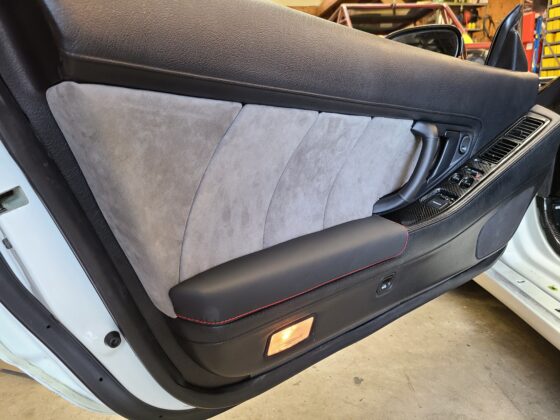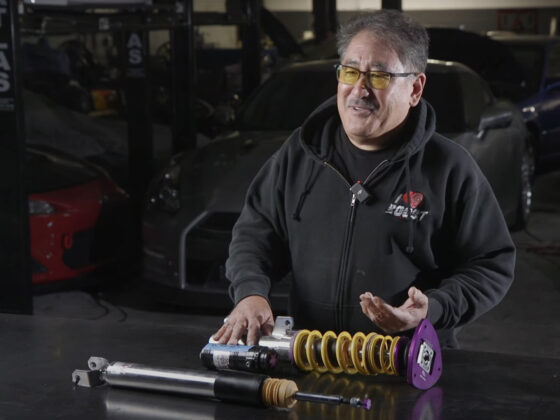
The BMW S58 engine is pretty impressive, directly based on BMW’s sturdy diesel engines, it is capable of producing over 1000 hp with just bolt-on mods. One of the bolt-on mods that is needed to support big power gains is a new intake manifold with an improved intercooler. We had previously tested CSF Racing’s offering for the B58B30C and B58M30O1 engines found on the A90 and A91 Supras with great results. For the BMW variant of the B58, CSF went all out to improve their already excellent design by teaming up with heat exchanger manufacturer PWR.

PWR is renowned for its heat exchangers with their parts being used in everything from NASCAR to F1. The intake manifold is a joint development program using the engineering prowess of both CSF and PWR. The manifold is designed to be a direct bolt-on replacement for the stock BMW part with absolutely no messing around needed. CSF spent a lot of time with high-resolution scanning of the engine bay and the stock manifold with test fitting using 3D printed parts to make sure the manifold would fit perfectly for an easy installation. The manifold is primarily made of CNC-machined aluminum parts taken off of the 3D printed prototypes.

The S58 uses direct injection to provide the primary fuel. This is how the turbocharged engine can have an 11:1 compression ratio and why the engine is so resistant to detonation on E85. However, it is difficult to modify direct injection to get the high fuel flows needed for big power numbers. To accommodate big power, secondary conventional injection is used by most tuners. The CSF intake manifold comes with the bosses and fuel rail so you can add your injectors with ease.

The CSF intake manifold also has bosses for nitrous port injection if you wanted to use it.

You can see that the manifold comes with a fuel rail and all the fittings needed to use it. It also comes with a plastic heat-isolating intake gasket that keeps heat from the cylinder head from conducting into the manifold itself.




11 comments
Holy 7000USD, those are some impressive gains.
so 1000hp in my subaru would be like $100k USD and it still would get smoked by this. hahahah
That’s an impressive piece and holy hell that can be done with modern cars as far as power outputs. One thing I do wonder though is… every time I see CFD of manifolds published it’s always as if the manifold is sitting loose – throttle body flowing to every port at once. I’m not sure it’d make a difference, and it’d be more setup work, but intuitively it seems like seeing if flow is equal with only one cylinder at a time fully open would be more realistic. Has experience showed that it doesn’t matter, and or is this just kind of a “beauty shot” as a subset of a lot of different test cases? Because obviously it works, I’m just curious as to the thought process.
Good question. The way I figure, it’s all an approximation one way or another. When I did the exhaust manifold for my S2000, I did do one cylinder at a time. Either way, I don’t think basic CFD captures pulsation effects. It’s been 8-10 years since I used GT-Power, but they had added functionality at the time where you could import the 3d CAD and it’d create system model in GT-Power for you. The stuff you can analyze in GT-Power is amazing.
I wonder too if just, every port open at once might be a worse case scenario anyway for distribution, maybe show some choke points that in practice don’t matter as much as they do in reality.
Wish there was a realistic way for me to mess with GT-Power or one of the other 1d sims even at a more basic level. Too many areas of car stuff for one person to mess with in one lifetime.
Ricardo Wave?
I should shoot them and email and at least see how many zeroes of dollars a seat would be; the GEMS GDA software was well within my means, for example, and I’ve had a few other instances of being surprised. As long as I’m over-ambitious and in over my head, why not shoot for the moon, right?
The B58 and the S58 are not the same engine. Toyota has never received any version of a S58 engine ever for the A90 or A91 Supra. Hope this helps.
They are in the same engine family.
You need to amend your sentence where you say the s58 is the bmw variant of the b58. Lol. They were both designed by bmw, the b58 released in 2015 long before there was a mk5 supra. Toyota is a customer of bmw for supra parts/chassis. They did lots of testing beforehand but the b58 is not their engine, never has been.
They are pretty close to being the same engine. They are the same engine family. Just stuff like stronger pistons, higher pressure injectors, and twin turbos but most of the engine is the same and I bet parts interchange.